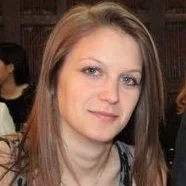
Blood & Immune Development
Studying how the blood and immune systems develop before birth
Background image: Single blood cells grown in culture from human fetal tissues (Image by Emily Calderbank-May, Laurenti lab)
Blood and immune cells are produced very early in human development, through highly complex mechanisms that researchers have only just recently begun to understand.
Since blood is a liquid which moves throughout the body, the technologies and techniques used to study it may be different from the technologies used to study other (solid) tissues, such as the heart and lungs, for example.
Better understanding of how blood and immune cells develop in human embryos and fetuses will be key for improving treatments for diseases such as leukaemia and other blood disorders, as well as advancing regenerative medicine in the future.
Cells of the lymphatic system in the human digestive tract at 14 weeks of development, which will develop into blood vessels (Image from the Chédotal lab: https://doi.org/10.1016/j.cell.2017.03.008)

Understanding lineage specification in the developing blood/immune system has far-reaching implications beyond life in the womb.
Background image: Main arteries in the human foot at 11 weeks of development (Image from the Chédotal lab: https://doi.org/10.1016/j.cell.2017.03.008/)
In recent years, the development of single cell multi-omic technologies combined with sophisticated computational methods have provided an unprecedented insight into the parallel development of blood and immune systems during early prenatal life and have allowed a comparison of cell states across tissues.
Video above: Blood vessels in the human leg at 11 weeks of development (Video from the Chédotal lab: https://doi.org/10.1016/j.cell.2017.03.008/)
However, key questions about the intrinsic regulation of haematopoietic stem cells throughout early development, how they are supported by the diverse haematopoietic niches encountered over time and the mechanisms by which these cells ultimately adapt to various organs and antigens in the periphery remain to be addressed.
These insights could have important implications for stem cell transplantation, tissue engineering for immunotherapy and regenerative medicine in the future.
By combining the wide range of expertise of our team we aim to apply genetic barcoding methods for lineage tracing, leverage spatial transcriptomics to detect clonal relationships and visualise the complexity and architecture of whole human tissues with novel 3D imaging methods. Our goal is to advance the protocols and methods available in the field to uncover mechanisms driving human blood and immune cell development throughout early life.

Members
-

Prof Muzlifah Haniffa
Newcastle University, Sanger Institute
Through the application of single cell genomics technologies and by harnessing their multi-disciplinary expertise, the Haniffa lab aim to understand the development and functional maturation of the human immune system, how it maintains health throughout life and the consequences of infection, inflammation and disease.
-

Prof Bertie Göttgens
Wellcome-MRC Cambridge Stem Cell Institute, University of Cambridge
Using a combination of experimental and computational approaches, the Göttgens group study how blood cells develop and how mutations in stem/progenitor cells can cause haematological malignancies. With genome-scale assays, single cell analysis and functional mechanistic approaches, the group have driven efforts to gain novel insights into the molecular controls of murine and human blood cells.
-

Prof Elisa Laurenti
Wellcome-MRC Cambridge Stem Cell Institute, University of Cambridge
The Laurenti group have developed integrated approaches that combine in vitro and in vivo single cell assays, transcriptomics and bioinformatics to study human haematopoietic stem and progenitor cells (HSPCs). By investigating how cell cycle regulation, inflammation and ageing affect the cellular and molecular composition of the HSPC compartment throughout human life, the group hope to unveil relevant mechanisms that could be translated to future therapies.
-

Dr Alain Chédotal
The Chédotal lab are interested in deciphering the cellular and molecular mechanisms that control neuronal connection development as well as brain evolution. They have been driving the development of novel 3D imaging techniques, combining whole-mount immunostaining, tissue clearing and light-sheet microscopy to study human embryogenesis.
-

Dr Emily Calderbank-May
(Laurenti lab)
-

Dr Qi Liu
(Göttgens lab)
-

Dr Vicki Moignard
(Haniffa lab)
-

Júlia S. Viladevall
(Laurenti lab)
-
Former members
Shirom Chabra
Dr Laure Gambardella
Dr Myriam Haltalli
Dr Megumi Inoue
Dr Win Min Tun

